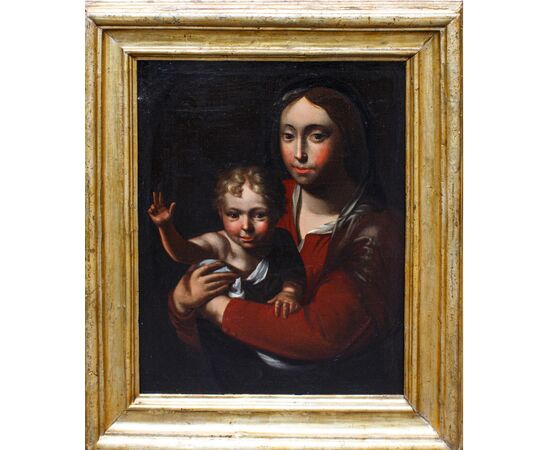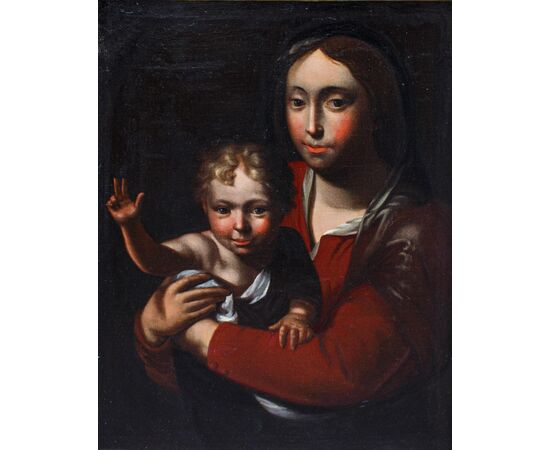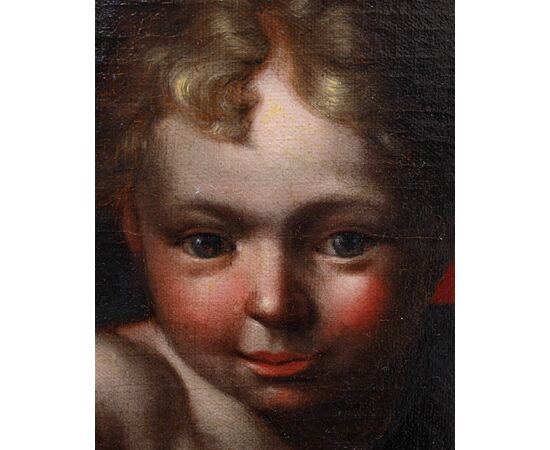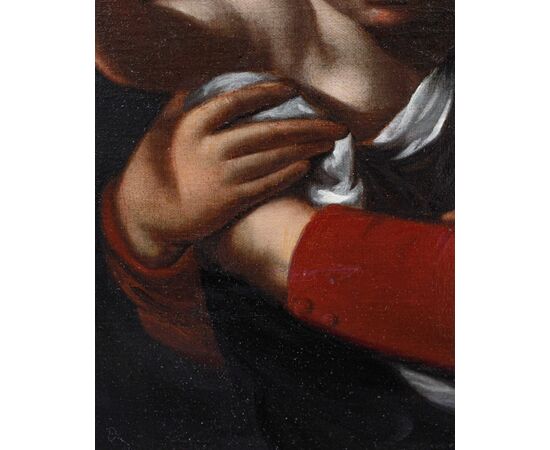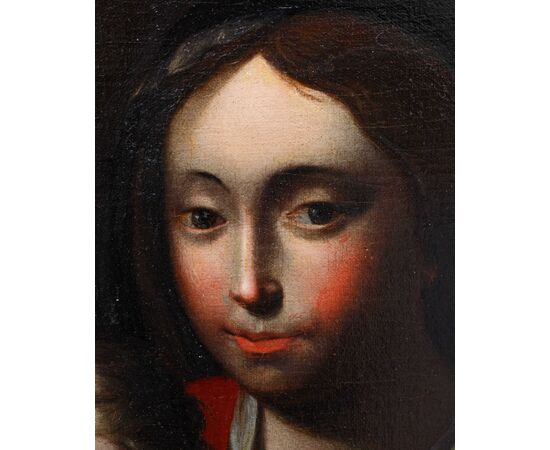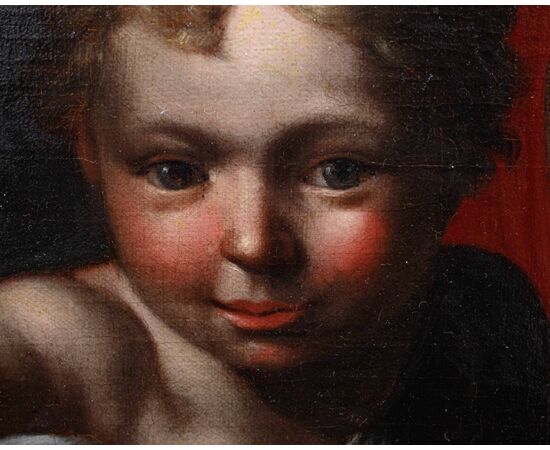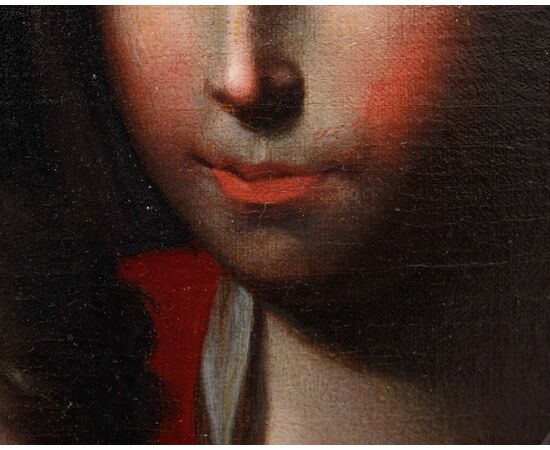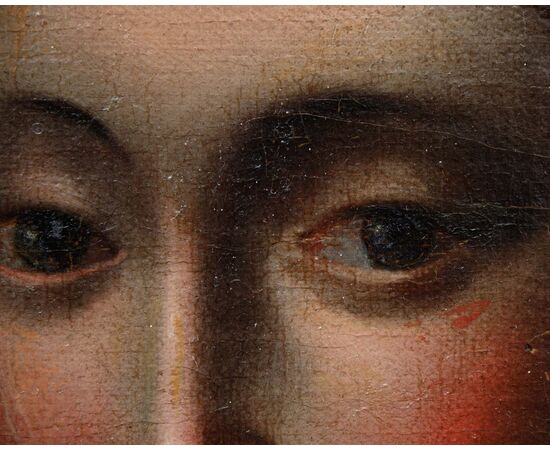17th century, Bergamo school, Madonna with blessing Child
17th century, Bergamo school
Madonna with blessing Child
Oil on canvas, 62 x 51 cm
With frame, 83 x 71 cm
The vivid redness that ignites the cheeks of the Virgin and Child, velvety in the nuance that recalls the most sentimental expressions of Giovanni Stefano Danedi known as Montalto (1612-1690), is in turn indebted to the tradition encouraged by the greatest artists of the early 17th century Milanese school such as Morazzone, Cerano, and Procaccini. The material intensity and the polished form assumed by the characters also place the composition within the prevailing Bergamo pictorial custom piloted, at the beginning of the 17th century, by Enea Salmeggia, Gian Paolo Cavagna, Francesco Zucco, and, to a lesser extent, by Pietro Ronzelli. These artists, all of whom died by 1630, marked the territory in an incontrovertible way, so much so that critics still wonder whether it is appropriate, for the generations of artists following them, to discuss in terms of a post-Salmeggia school or not. The 17th-century canvas, with a similar subject, now preserved at Palazzo Marinoni Barca (Clusone, Bergamo), while not providing a clue to trace the identity of the present one, does suggest the multiple references to various artists. To Giacomo Cotta (1627-1689) first and foremost, very active on Bergamo soil but foreign to that local pictorial tradition that for two centuries was indebted to Venetian culture, who with his Madonna with Child and Franciscan saint of the Monastery of the Visitation of Alzano Lombardo (BG) is close to the present in the deep gaze and the cut of the eyes of the Virgin, promoting a moderate and intimate composition. Cristoforo Roncalli, known as Pomarancio (c. 1553 - 1626) in the Madonna with blessing Child (Urbino, National Galleries of the Marche) also anticipates the present arrangement of the figures and the geometric perfection of Mary's face. Brescian artists of the caliber of Francesco Paglia (1635-1714) seem to have reflected at a later time on the results of this treatment of color, adopting that strong chiaroscuro that insists on the classicizing confections of religious scenes, as happens with the Madonna and Child between St. Lucy and St. Apollonia (parish church San Marco, Livemmo, Brescia) by Paglia.
The present also contributes that immediately preceding ray of influence, which recognized Giovan Battista Moroni (1520/24-1578/79) as a champion also in religious portraiture, as happens for the Madonna with Child and San Giovannino (Museum of Fine Arts, Szépmuvészeti Múzeum in Budapest). The Venetian-Bergamo school that created the Madonna with Child and the Madonna with Child, Saint John the Baptist and Saint Joachim of the 16th century of the Tadini Academy of Fine Arts (Gallery of the Academy, Lovere, Bergamo) dwells on a further figurative level, allowing the present to be combined with the distant echoes of Bernardino Butinone (c. 1450-c. 1510) and his Madonna with Child of the Pinacoteca di Brera (Milan).
The object is in good condition

